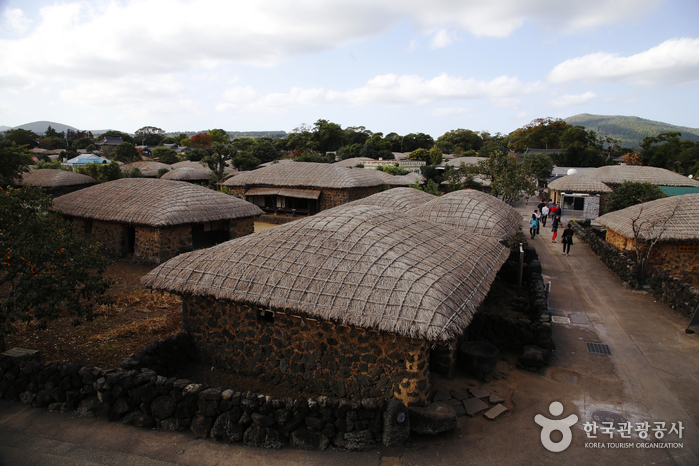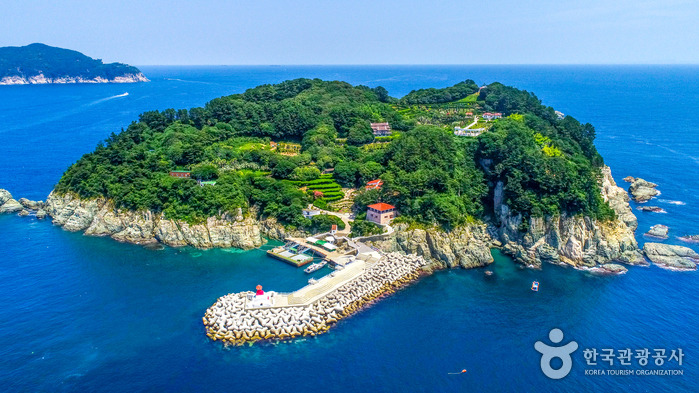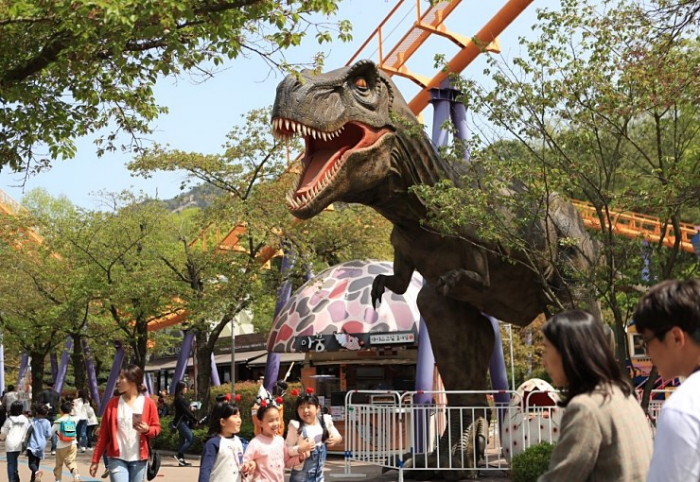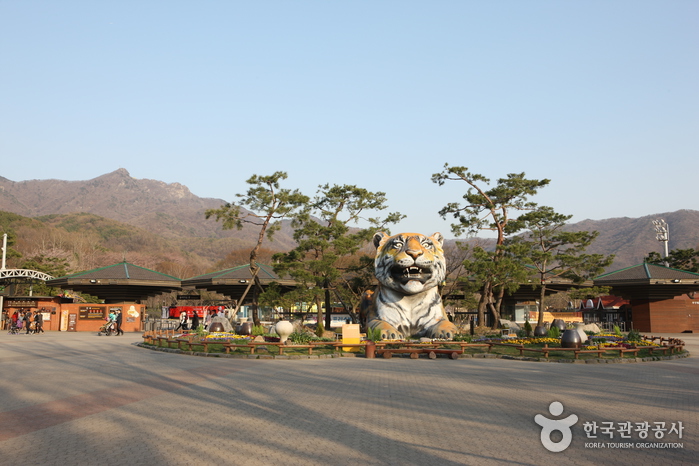Jirisan National Park (Sancheong) (지리산국립공원(산청))
2025-03-28
320-2 Jirisan-daero, Sicheon-myeon, Sancheong-gun, Gyeongsangnam-do
+82-55-970-1000
* Please be advised that this is located in one of the areas affected by the recent wildfire (as of March 27, 2025).
** For real-time wildfire information and emergency upates, visit the Korea Forestfire Information website and the National Disaster and Safety Portal.
Jirisan National Park is the first national park established in South Korea, featuring peaks like Cheonwangbong Peak (1,915m), Banyabong Peak, and Nogodan Peak, which rank as the next highest after Halla Mountain. It's a popular destination for mountain enthusiasts, offering beautiful natural landscapes such as Naewonsagyegok Valley. The park also provides convenient facilities like Jirisan Recreational Forest, Naewonsa Temple, mountain lodges, campgrounds, and pensions.
Changnyeong Upo Wetland (창녕 우포늪)
2023-02-13
220, Uponeup-gil, Changnyeong-gun, Gyeongsangnam-do
+82-55-530-1533
Upo Wetland is the largest natural wetland in Korea. The wetland takes up three different areas of Changnyeong-gun with a total size of 2,314,060 square meters. Created approximately 140 million years ago, the wetland was formed when the soft ground collapsed and water filled the area to form swamps and lakes, where dinosaurs played. Dinosaur footprints can be found at Sejin-ri near Upo Wetland.
Seongeup Folk Village (성읍민속마을)
2024-03-11
3294, Seongeup-ri, Pyoseon-myeon, Seogwipo-si, Jeju-do
+82-64-710-6797
Seongeup Folk Village has been designated and protected as a folk village, preserving the characteristics of Jeju's old private houses. Various tangible cultural heritage and intangible cultural heritage such as folk songs and games, local foods and craftmanship, and Jeju dialect are being passed down. The village offers traditional culture and traditional house experiences, and holds cultural events every October and November.
Suwon Hwaseong Fortress [UNESCO World Heritage] (수원 화성 [유네스코 세계유산])
2025-08-06
Yeonghwa-dong, Jangan-gu, Suwon-si, Gyeonggi-do
+82-31-290-3600
Suwon was one of four main regional government centers during the Joseon dynasty. Hwaseong Fortress, built to protect the city, was designated as a UNESCO World Cultural Heritage Site on December 12, 1997 for its historical value. The fortress offers various performances daily as well as the Suwon Hwaseong Cultural Festival every fall. The walls stretch for 5,700 kilometers, with Paldalsan Mountain at the center. The fortress, constructed from 1794 to 1796, was built as a display of King Jeongjo’s filial piety towards his father and to build a new pioneer city with its own economic power.
Oedo-Botania (외도 보타니아)
2025-10-23
17, Oedo-gil, Geoje-si, Gyeongsangnam-do
+82-55-681-4541
Oedo-Botania is a marine botanical garden located on an island in Hallyeohaesang National Park between Tongyeong and Geojedo Island. What started over 30 years ago as a private garden has expanded to cover the entire island in a plethora of plants in European-style gardens, accented by scultures and statues. The garden blooms in a riot of flowers in April, and visitors can walk in the cool shade of the forested trails in summer. Recently, dinosaur footprints were found on the island, adding to its value. The island's cafe offers drinks and light snacks, along with a fantastic view of Haegeumgang Island and the surrounding blue sea. Oedo-Botania is only accessable via a ferry tour, and there are no accommodations on the island.
Seoulland (서울랜드)
2023-03-23
181, Gwangmyeong-ro, Gwacheon-si, Gyeonggi-do
+82-2-509-6000
Seoulland was the first theme park in Korea, built at the foot of Cheonggyesan Mountain. With more that 50 rides and other seasonal attractions, Seoulland offers thrill and excitement for people of all ages. Luna Land and Jurassic Land are not to be missed.
The pride of Seoulland is its wide selection of seasonal festivals and the unique Laser Show held during the evening. Seoulland is a popular destination as it is easily accessible from downtown Seoul and has many nearby attractions, being part of the larger Seoul Grand Park complex. Seoul Grand Park holds various festivals for each season of the year. The Tulip Festival is held from April to May; the Starlight Rose Festival from July to August; the Chrysanthemum Festival from September to October; and the Snow Light Festival from December to February.
Chuncheon Soyangho Lake (소양호 (춘천))
2021-05-06
1128, Sinsaembat-ro, Chuncheon-si, Gangwon-do
+82-33-242-2455
Soyangho Lake was created by the building of Soyang Dam in 1973. Soyangho Lake is famous for catching freshwater fish, such as trout, carp, smelt, and eel. The waterway stretches all the way to Inje, with beautiful scenic views. Water sports can be enjoyed from the dock near Soyang Dam, with boat rides to Cheongpyeongsa Temple as well as around the lake. Many cafes and restaurants are located around the lake, making it a great vacation spot.
Seoul Grand Park (서울대공원)
2023-03-17
102, Daegongwongwangjang-ro, Gwacheon-si, Gyeonggi-do
+82-2-500-7335
Seoul Grand Park is a family-friendly amusement park consisting of various themed facilities that promote the growth and preservation of diverse animals and plants.
[Seoul Zoo]
Seoul Zoo aims to provide an ideal environment for animals to grow and live as well as exhibit, preserve, and research rare animals and educate the public. As a result of the zoo's hard work and efforts, it is the only zoo in Korea to be certified as a member of both ISIS and IUDZG-WZO.
[Botanical Garden]
Seoul Grand Park's Botanical Garden was opened in 1985 amidst the lush forest situated at the foot of Cheonggyesan Mountain. The garden consists of a greenhouse, exhibition facilities, and themed gardens that boast a collection of over 41,000 plants from 1,262 different species. The greenhouse preserves and exhibits tropical and subtropical plants that are not found in Korea. Moreover, the Botanical Garden offers various activities and experience programs related to plants and forests.
[Theme Garden]
The Theme Garden is one of the most representative facilities of Seoul Grand Park. The Theme Garden consists of a Rose Garden and Children's Zoo. Seasonal plants and flowers as well as diverse themed garden programs are offered.
[Healing Place]
The Healing Place is a forest formed at the foothills of Cheonggyesan Mountain that surrounds the border of Seoul Grand Park. Main facilities consist of Healing Forest Walkway; Water, Wind & Sunshine Healing Zone; Barefoot Road; Aroma Garden; and Forest Plaza.
[Healing Forest Walkway]
Healing Forest Walkway is a walking path lined by diverse trees that form a lush forest serving as a habitat for small animals like squirrels, rabbits, raccoons, and more. The walking path is approximately 8 kilometers long and divided into four sections. The shortest course takes approximately 30 minutes to complete, while the full course requires 3 hours.
[Campsite]
The campsite within the Seoul Grand Park is the perfect place to camp out, hold picnics and enjoy recreational activities with friends and families. The main facilities consist of a campsite, volleyball court, basketball court, snack bar, and shower facilities. The campsite is open from March to November, except in the case of harsh weather conditions.
Seopjikoji (섭지코지)
2025-10-23
107 Seopjikoji-ro, Seogwipo-si, Jeju-do
Seopjikoji gets its name from its shape, jutting out to sea, with 'koji' being the Jeju dialect for a cape. Located just south of Seongsan Ilchulbong Tuff Cone, the cape is a popular tourist attraction. The tuff cone along with a beautiful vista of the ocean and fields of canola flowers can easily be seen from the peak of Seopjikoji. On top of the hill stands a beacon fire station, reaching 4 meters in x_height with a diameter of 9 meters, built using volcanic rocks. Behind the beacon fire station is Bulgeunoreum Volcanic Cone, vibrant with red soil. The white lighthouse atop the cone stands out in contrast. Seopjikoji has been used as a filming site for many Korean movies and dramas.
Seongsan Ilchulbong Tuff Cone [UNESCO World Heritage] (성산일출봉 [유네스코 세계문화유산])
2024-10-29
284-12 Ilchul-ro, Seogwipo-si, Jeju-do
+82-64-710-7923
Seongsan Ilchulbong Tuff Cone rose 180 meters above sea level due to a magma flow under the sea over 5,000 years ago. It was originally a separate island, but a build-up of sand and soil has connected it to the main island. A large crater, formed by the hot lava mixing with cold ocean water, is located at the top of Seongsan Ilchulbong Tuff Cone. The crater is about 600 meters in diameter and 90 meters deep. It has been featured in films, and was originally used for agriculture, but has now been given over to a field of silver grass. From the summit, visitors can see Udo Island, as well as take in the magnificent sunrise. The tuff cone area was designated as a natural reserve on July 19, 2000.



![Suwon Hwaseong Fortress [UNESCO World Heritage] (수원 화성 [유네스코 세계유산])](http://tong.visitkorea.or.kr/cms/resource/36/2613036_image2_1.jpg)





 English
English
 한국어
한국어 日本語
日本語 中文(简体)
中文(简体) Deutsch
Deutsch Français
Français Español
Español Русский
Русский